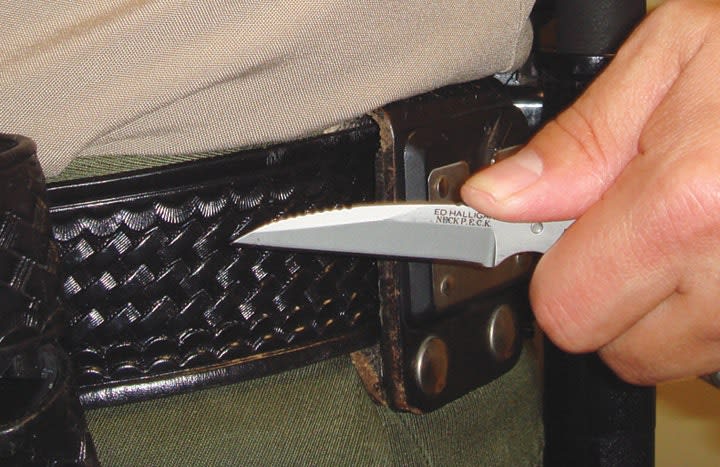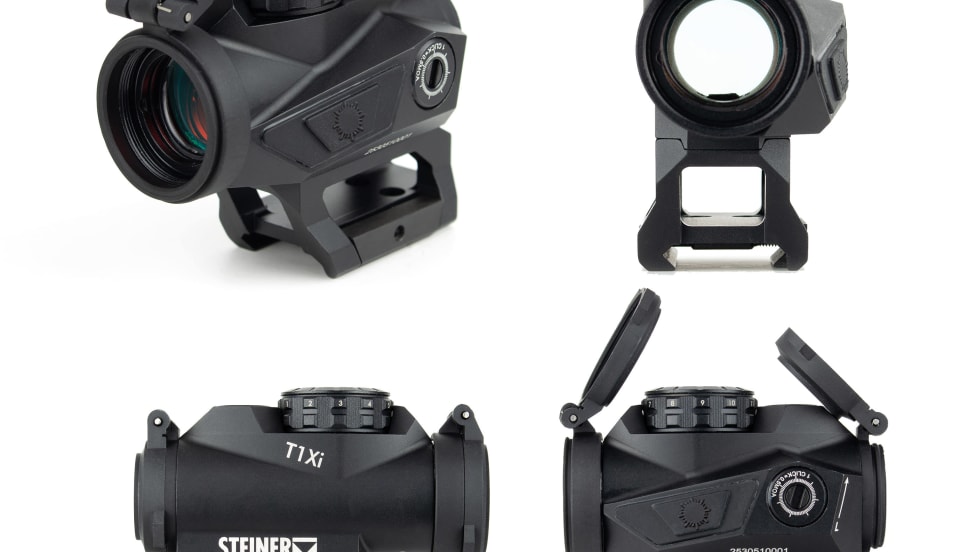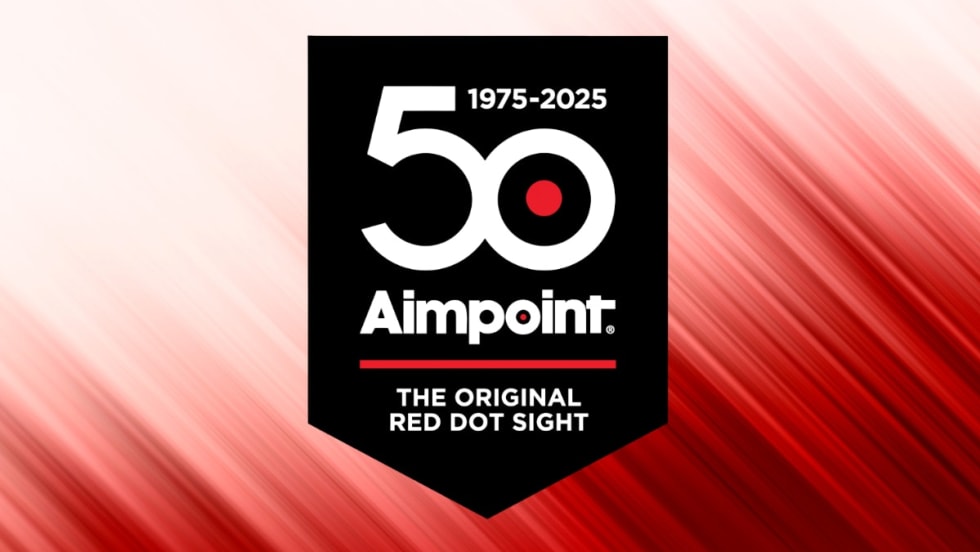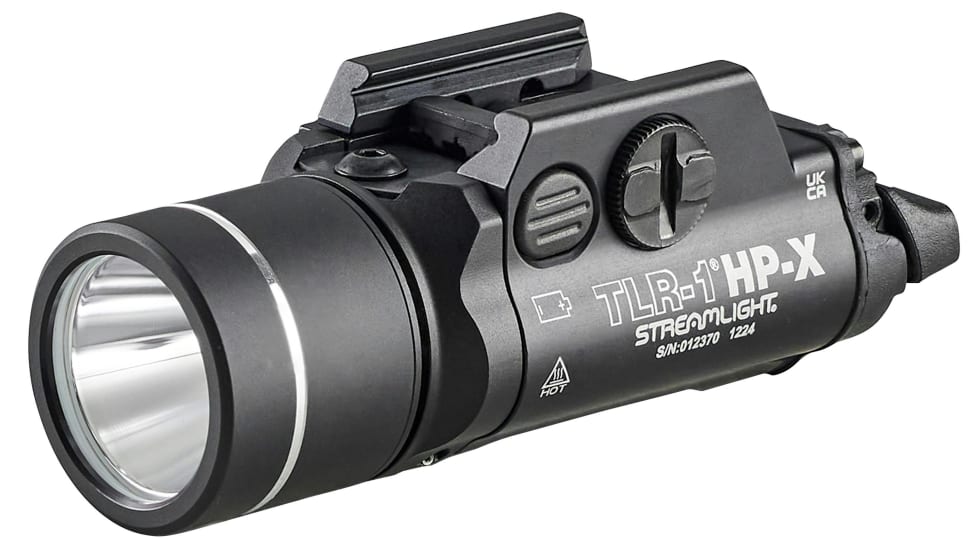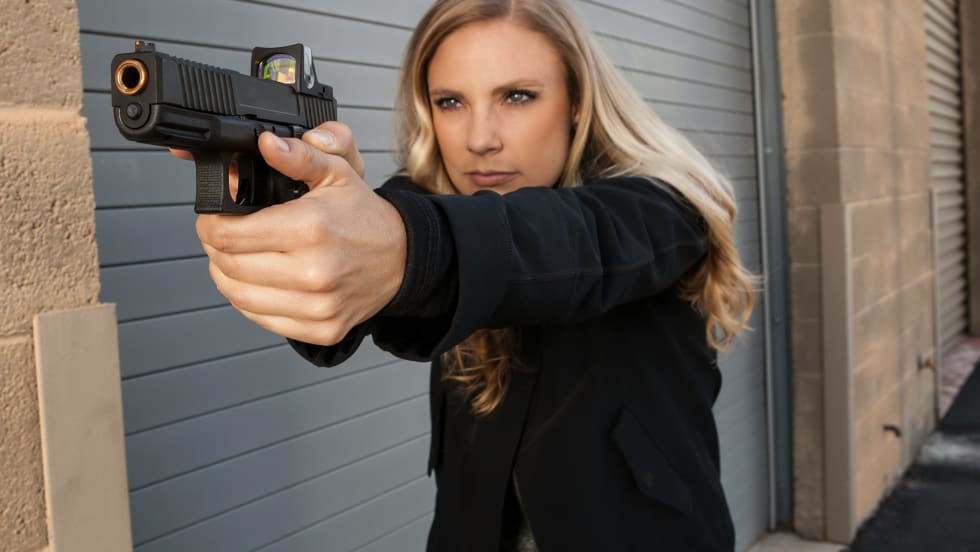There are generally two reasons to carry a knife. First, as a tool for cutting, scraping, and other mundane tasks. Second, as a last ditch self defense weapon. While working patrol, I carried several knives. To prepare for situations in which a knife could save my life, I went over scenarios in my head in which I was in a bad situation or a bad position. I would then see what tools were available to me and if I could reach them. Sometimes, I found that I could not reach my backup gun, but I would be able to reach one of my knives.
When it comes down to using a knife to save your life, you will likely be in close proximity (usually face to face) with your assailant; rolling around on the ground fighting for your gun when this situation raises its ugly head. You can't or won't be able to use your firearm (if you could, you would). Your pepper spray is on the ground. Your baton is useless when you are on your back. Help may or may not be forthcoming. You are about to lose the fight and the bad guy is trying his best to kill you. When it dawns on you to use your knife, it would be a crappy time to remember that the only knife you have is in a case on the back of your gun belt and takes two hands to open.
Now is the time to think about some important issues pertaining to edged weapons. Will you be able to grab your knife, open it, and use it when fighting with a dirtbag? Under what circumstances would you use a knife to save your life? Do you have it in you to stab, slice, maim, or kill a bad guy with a knife? These are difficult questions to answer without some forethought.
A multiple use knife that's to be used as a tool (Leatherman, Gerber multi-tool, etc.) should be housed in a belt sheath. On the other hand, there are various types of defensive knives that can be carried in numerous locations. When selecting a location to carry your edged weapon, you should consider the following:
Convenience: Is it easy to get to? Is it going to be placed on your jam-packed gun belt? In your back pocket next to your wallet? In your sap pocket with your flashlight?


